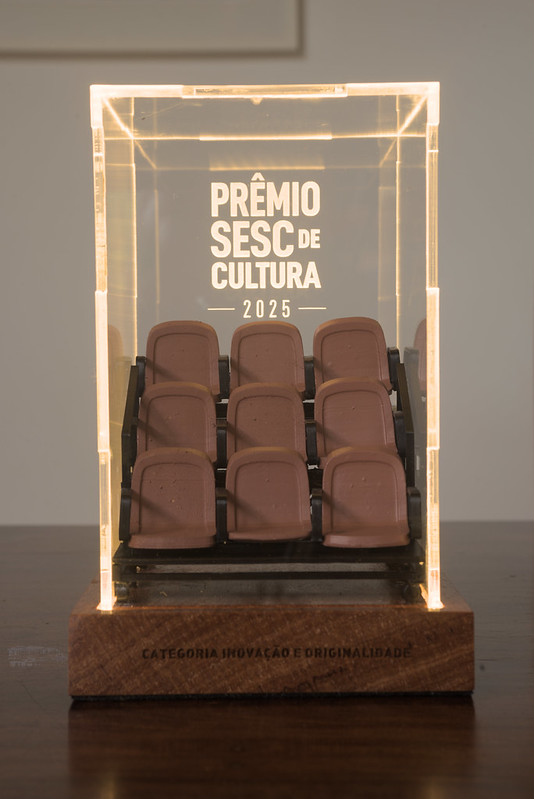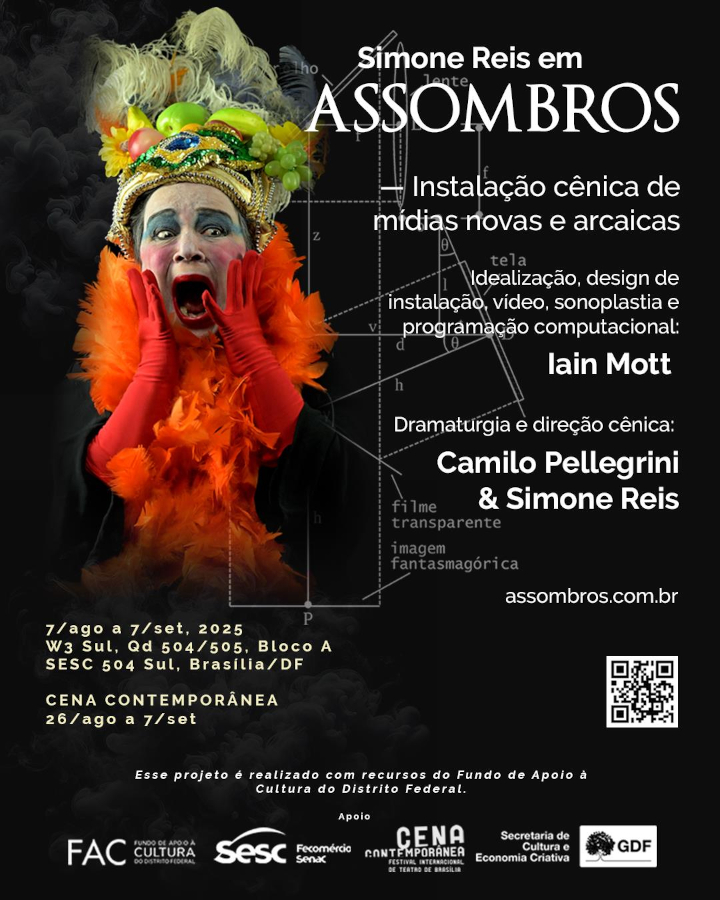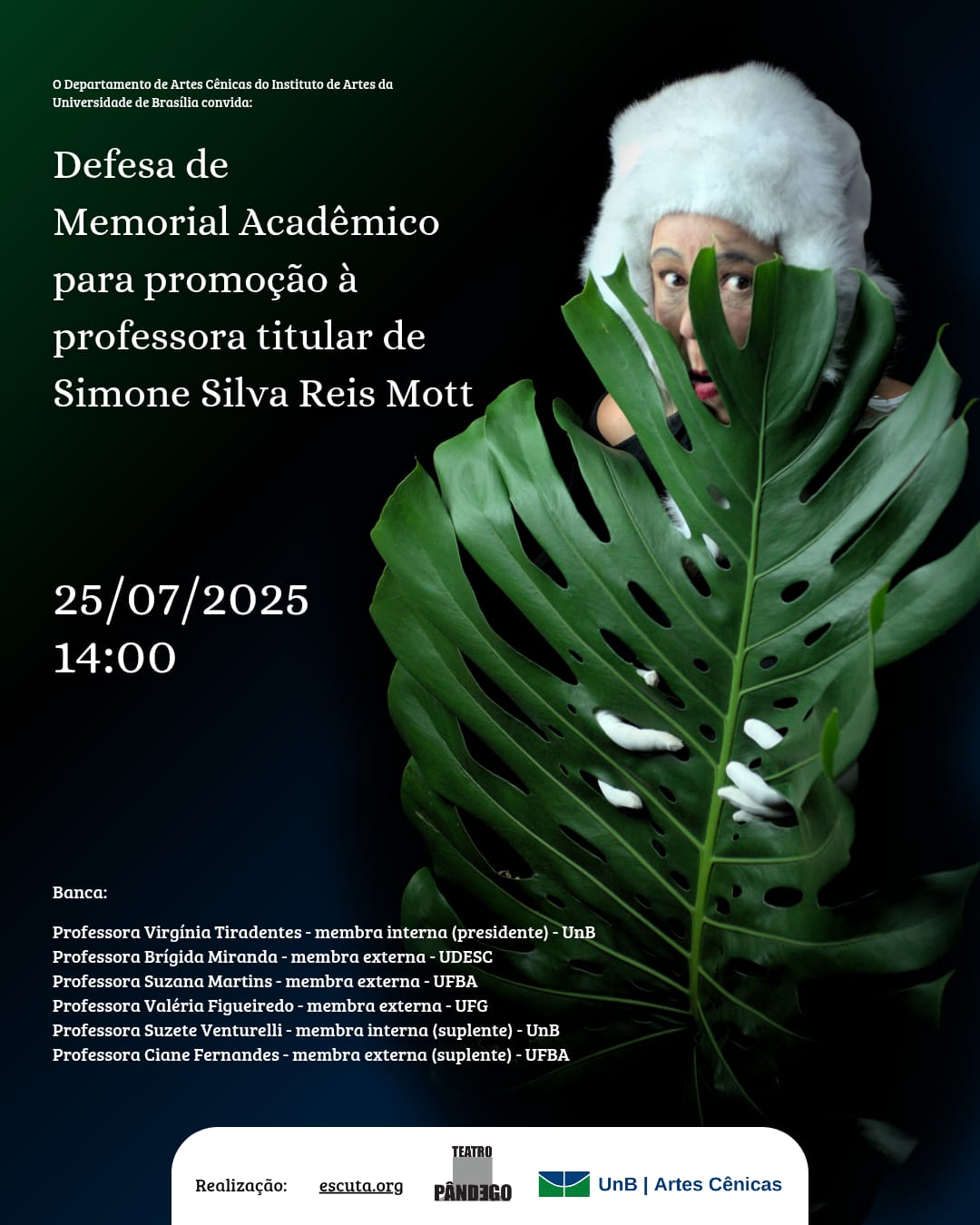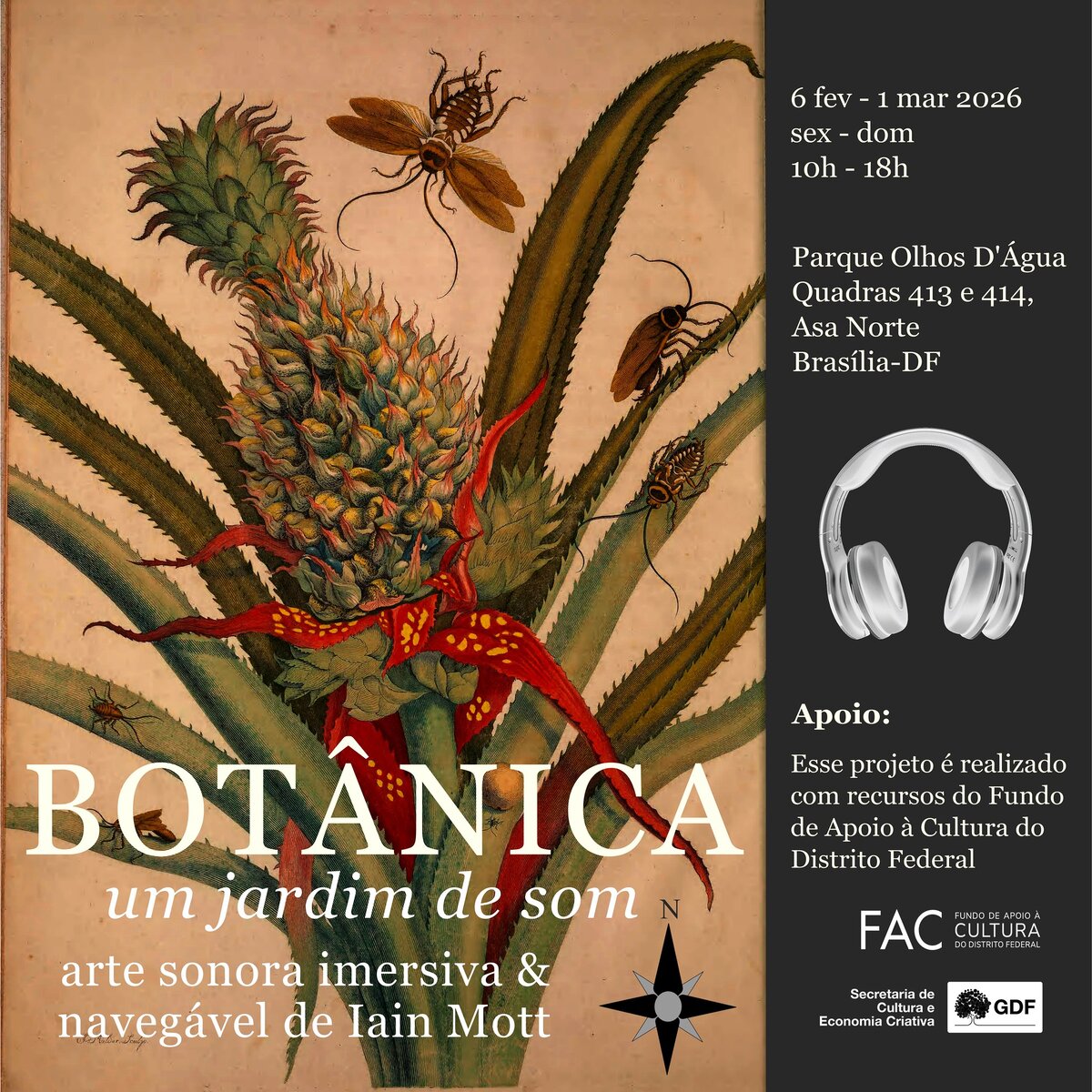Notícias

Prêmio SESC de Cultura
Estamos felizes em compartilhar que Assombros foi premiado com o Prêmio SESC de Cultura 2025 na categoria Inovação e Originalidade.
Gratos ao SESC DF pela oportunidade de apresentar o trabalho no SESC 504 Sul in Brasilia, ao nosso produtor Robson Castro e a Bruca Teixeira pela ajuda na montagem. Agradecimento especial ao FAC-DF (Fundo de Apoio à Cultura da Secretaria de Estado de Cultura do Distrito Federal) pelo apoio essencial para tornar este projeto realidade.
Saiba mais sobre Assombros: https://assombros.com.br
Mais informação sobre o prêmio: SESC DF

Assombros: Flyer 1
Para mais informação, artigos, imagens e vídeos, veja https://assombros.com.br.

Defesa de Memorial Acadêmico para Promoção à Professora Titular de Simone Silva Reis Mott
O Departamento de Artes Cênicas do Instituto de Artes da Universidade de Brasília convida para a defesa de memorial acadêmico da professora Simone Silva Reis Mott, como parte do processo de promoção à classe de Professora Titular.
📅 Data: 25 de julho de 2025
🕑 Horário: 14h
💻 Plataforma: Microsoft Teams
🔗 Link de acesso: Clique aqui para participar






